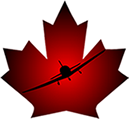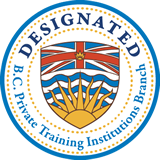 |
|
Landing/Takeoff Considerations, Part VI:
Landing
“When I'm working on a problem, I never think about beauty. I think
only how to solve the problem. But when I have finished, if the
solution is not beautiful, I know it is wrong.”
--Richard Buckminster Fuller--
Last month we talked about the effects of different surfaces on the
takeoff process. We saw that rolling resistance and aerodynamic drag
are the two major retarding forces acting to increase takeoff
distance. Today, we’ll explore landing.
On
landing, we would like to reduce the distance required as much as
possible consistent with safety and comfort. The three main forces
we rely on to achieve that are aerodynamic drag, rolling resistance
and braking.
To
maximize the positive effects of these factors it is helpful to
understand how they work and what we, as pilots, can do to achieve a
safe and controlled landing, mitigating the negative effects on
aircraft landing performance resulting from difficult surface
conditions.
Grass, gravel, dirt, snow, ice or standing water all increase
rolling resistance but impede braking efficiency. An increase in
rolling resistance serves to shorten our landing roll; a reduction
to braking efficiency increases the distance required to bring our
aircraft to a stop.
When executing a normal landing on a smooth, paved surface,
aerodynamic drag—the direct product of lift and high angle of
attack—serves to slow the aircraft and decrease landing distance. It
is most effective during the initial stages of the landing roll.
Drag (D) = 1/2CdpV2S, where Cd represents the coefficient
of drag—a function of angle of attack and wing shape—p (Rho)
represents air density, V represents velocity and S represents the
surface area of the wing.
Lift and drag increase and decrease in proportion to the square of
the velocity. As the aircraft decelerates to half its initial
landing speed, both lift and drag are reduced to one quarter of the
force the exert at touchdown. The assistance we gain through
aerodynamic drag in slowing the aircraft decreases rapidly as
airspeed decays.
On
normal landings we can make use of the effectiveness of aerodynamic
drag as a retardant force to reduce landing distance by holding the
nose of the aircraft in a nose up attitude and leaving what flaps we
have deployed for landing in the down position. During the initial
phase of the landing the drag resulting from the increased angle of
attack and flaps will serve to help slow the aircraft.
As
the aircraft decelerates and the nose wheel settles to the surface,
the weight of the machine transfers from the wings to the wheels and
the contact weight of the aircraft—the amount of total weight
supported by the landing gear—will assist braking, if required,
during the last phase of the roll.
Rolling resistance—the resistance to forward movement resulting from
the interaction of the landing gear with the landing
surface—increases as the weight supported by the gear increases.
Roll resistance also assists in reducing landing roll.
Normally, on grass or gravel or other unpaved surfaces we will opt
to land with full flaps as slowly and gently as possible. We must
consider both the landing distance and the interaction between the
aircraft and the surface. We would like to avoid damage to our
valuable machine that may result from too hard a contact with the
surface.
Last month we saw that rolling resistance is calculated using the
formula R = μ(W - L) where R represents rolling resistance, μ
represents the coefficient of resistance, a function of the type of
surface, W represents the weight of the aircraft and L represents
lift. As the aircraft decelerates and lift produced by the wings
decreases, the effect of weight which assists rolling resistance
increases. The rougher the surface on which we landing the greater
the rolling resistance.
Short grass increases the resistance coefficient, µ, by 250% over
that experienced on a paved surface. Tall grass increases the
coefficient by 500%.
If
we discount the use of brakes as a speed retarding force, landing on
a grass or other rough surfaces will actually result in a shorter
landing roll than landing on a smooth, paved surface.
If
our goal is to achieve the shortest possible landing distance when
landing on a paved surface which provides maximum braking
effectiveness, our technique is somewhat different. Normally, we
will choose to retract flap as soon as ground contact is achieved to
assist in the transfer of weight from the wings to the wheels as
quickly as possible. This increases the contact weight of the
aircraft and increases the effectiveness of the brakes in bringing
the aircraft to a stop.
To
assist the brakes, we will normally choose to maintain a relatively
high angle of attack during the early phase of the landing roll to
maximize the effect of aerodynamic drag as a retardant force.
When applying brake, it is important to apply as much brake as
possible without allowing the wheels to lock and skid over the
surface. Once the tires begin to skid, brake effectiveness is sadly
reduced. We also risk damage to both the tires and the landing gear.
In
either case, touching down at minimum safe airspeed is an excellent
plan if we want to minimize our landing roll distance. As we
discussed some time back, a 10% increase in landing speed results in
a 20% increase in landing distance. Stopping distance is a function
of kinetic energy dissipation: the less kinetic energy we bring to
the initial phase of landing, the less distance we require to bring
the aircraft to a stop.
While grass, gravel, dirt, snow, ice or standing water all increase
rolling resistance they impede brake efficiency on landing.
According to the C-172 POH, for example, landing on dry grass will
increase our landing roll by approximately 45%. This increase is
primarily a function of the reduction in braking efficiency. Grass
is much more slippery than dry pavement.
Consulting the Runway Surface Condition (RSC) and James Brake Index
Equivalent Chart—section E in your Canadian Flight Supplement—will
give some helpful numbers in calculating the effects of various
levels of moisture on landing distance. Using “bare and dry” as a
baseline, giving a braking coefficient of 0.8 to 1.0, we see that
standing water results in a significant reduction in braking
efficiency.
Less than 0.01” of standing water will decrease our braking
efficiency to 0.6 – 0.7. Standing water 0.1” or more, compacted snow
or ice can reduce our braking efficiency to virtually zero.
In
general, a wet, paved runway will increase our landing distance by
approximately 15%; water deeper than 3 mm can increase our landing
distance by 75%; and compacted snow or ice can increase our landing
distance by 100% or more.
Using the Landing Distance Required Corrected for JBI Only chart
gives us some comparative numbers. If an aircraft normally requires
1800’ for landing, under conditions of heavy rain, 0.03” – 0.1”
standing water, landing distance will increase to 2850’, an increase
of almost 160% (1.583). Standing water 0.1” or more can increase
landing roll to 4700’, and increase of 260%.
On
average, runways in Canada can be expected to be wet or contaminated
with frost, ice or snow at least one third of the time during the
coldest five months of the year. If you continue to fly all year
long, it is an excellent plan to understand the conditions within
which you will be operating and how best to mitigate the potential
hazards.
A
good Rule of Thumb is to consider brakes as ineffective and
potentially dangerous under conditions of standing water or
frost-covered, wet or icy runways until ground speed has been
reduced to a slow taxi. Improper use of brakes can result in loss of
control, runway excursion and/or damage to the landing gear.
Particularly in situations where only portions of a runway are
covered in compacted snow or ice, loss of control through improper
use of brake is unfortunately easy to achieve.
In
conditions where braking efficiency is limited, use of aerodynamic
drag as the primary source of retarding force is an excellent
option. We retain maximum control of the aircraft throughout our
landing roll. We pay with distance for not making use of brake, but
as long as we have calculated the required distance for a safe
landing the trade-off pays for itself in safety.
As
with takeoff, it is a good plan to remember that the aircraft POH
figures are developed using new aircraft and highly skilled pilots.
They also tend to be a bit on the optimistic side to impress
potential buyers. Your aircraft may not be quite so new; your
piloting skills may not quite match those of the professional pilots
employed to test new aircraft by the Cessna or Piper or Grumman
corporations.
Even if the calculations you have made, either at a desk or by some
kinaesthetic, belly-muscle gestimate, show things will work, it
isn’t a bad plan at all to be prepared to abort the landing if
things aren’t working out well. “Cleared for the option”, is a key
phrase. We are requesting an approach for landing and may or may not
land depending on how things work out.
If
you are prepared to “go around”, to abort the landing and return to
the sky if things are not looking promising, you set yourself up
with a much safer frame of mind than the fellow who thinks he must
complete each and every approach with a touchdown.
Have a good sense of the amount of runway you require under existing
conditions to execute a safe landing. Have a good sense of where
your wheels must touch the ground if that distance is to remain
available. Leave yourself some margin of safety. Be prepared to
abort the landing and try again if things are not working out.
There is no sense bending a perfectly good airplane just because
your calculations turn out to be too optimistic.
Understanding the effects of surface on landing distance and the
correct techniques to achieve a safe landing under the conditions
you may face is the best practice. Be familiar with your machine and
practice some of the techniques involved under conditions that do
not require excellent piloting skills. The best place to learn how
to execute a safe landing on a short or difficult surface is,
initially, at an airport with a nice, long, simple landing surface.
Enjoy the process of learning new skills and techniques. It improves
your flying skills and is great fun.
Notes:
|


